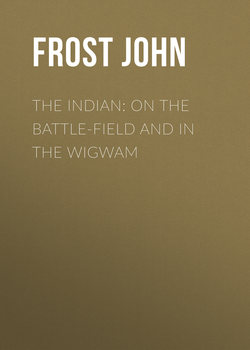Читать книгу The Indian: On the Battle-Field and in the Wigwam - Frost John - Страница 10
A BUFFALO HUNT
ОглавлениеHE buffalo hunt, next to the Indian battle, is the most intensely exciting scene which may be witnessed among the wilds of the west. To the buffalo, the Indian looks for food, for clothing, and for religious and household implements. He regards the hunting of that animal not only as a pleasure, but a duty; and when once it is rumored through a village that a herd of buffalo is in sight, their warriors who have faced death in a hundred forms, bring out their swiftest horses, and spring upon them; and when the whole party rush across the field eager to engage the bellowing herd, a scene is presented for which it would be in vain to look for a parallel, even among the cane-brakes of Africa, or the jungles of India.
The Indians have several methods of attacking buffaloes. The most exciting as well as the most dangerous one is that in which they run round the herd for the purpose of destroying it. The hunters, well-mounted with bows and lances, divide themselves into two columns, take opposite directions, and at the distance of a mile or two, draw gradually around the herd, and having formed a circle, close upon their prey at regular distance, On seeing the danger, the herd run in the opposite direction, where they are met by the other party. The circle is gradually closed, and the parties unite. By this time, the buffaloes are wheeling about in a crowded and confused mass, wounding and climbing upon each other. Then their destruction commences. Galloping round, the hunters drive the arrows and lances to the hearts of their victims. Sometimes, the animals, furious from their wounds, plunge forward, and bear down horse and rider, goring and crushing the former, while the active Indian escapes. Sometimes the herd divides in two, and the hunters, blinded by clouds of dust, are wedged in among the crowding beasts, when their only chance of escape is to leap over the backs of the herd, leaving the horse to his fate. Occasionally, a buffalo selects a particular horseman, and pursues him at full speed, until, when stooping to lift the horse upon his horns, he receives in the side the warrior’s shaft. Some of the Indians, when pursued, throw their buffalo robe over the horns and eyes of the furious animal, and, dashing by its side, drives the weapon to its heart. Others dash off upon the prairie, in pursuit of the few who got separated from the herd. In a few moments, the hunt is changed into a desperate battle, and gradually the whole mass of buffaloes sink in death.
The hunters then dismount from their horses, and claim their prey by drawing the arrows or lances from the sides of the dead beasts, and showing their private marks. Quarrels are generally avoided by this plan. After all the animals have been claimed, the warriors hold a council, and after smoking a few pipes, ride into the village and announce the result. Of course, every thing there is in commotion, and soon long processions of dogs and women issue forth, skin and cut up the prey, and return amid loud acclamations to their homes.
